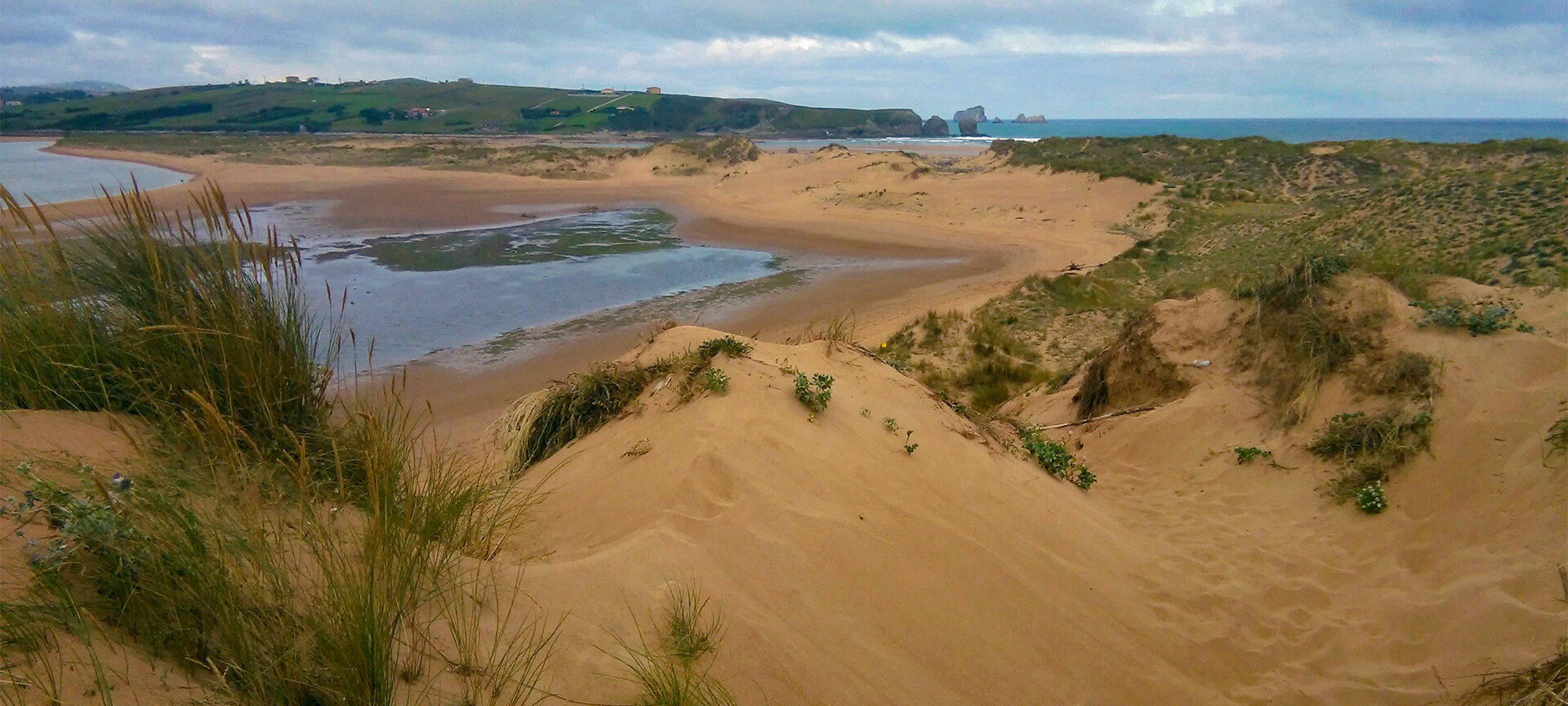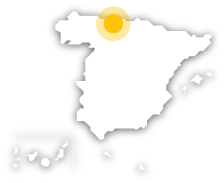
Dunes of Liencres and Costa Quebrada Natural Park

Dunes and rocks of the Cantabrian Sea
One of the largest systems of dunes on the northern coast of Spain, Liencres is home to a wealth of flora and fauna.
In addition to being one of the most important areas of dunes on the Cantabrian coast, this park also includes the nearby coast, part of the Costa Quebrada Geopark, as well as the neighbouring islets, the estuary of the river Pas and a large part of La Picota or Mount Tolío. The result is a highly unique space given its great combination of attractions: scenic, geological, botanical and fauna.The dunes, which initially was almost the only area of the park, which was later extended, are located on the left bank of the mouth of the Pas, in a peninsular area bordered by the Mogro estuary and several adjoining beaches. The sandy mountains have gradually become consolidated by reforestation with maritime pine (Pinus pinaster) carried out there in the mid-20th century.The dunes and estuary are home to numerous species of aquatic birds, such as the great plover, the common sandpiper, the grey plover, the black-winged curlew and others that have chosen this area as a resting place on their migratory journey. There is also an impressive population of lizards, snakes and amphibians, such as the midwife toad and the three varieties of newts that exist in the region.As for the section that comprises the world-renowned geopark, it consists of a stretch of coastline that is not only breathtakingly scenic, but also a veritable open-air laboratory where you can see geology in action. It is also a habitat for valuable colonies of seabirds.
Dunes of Liencres and Costa Quebrada Natural Park
Highway CA-231 Santander-Boo de Piélagos, past Liencres, detour along the CA-305 to Valdearenas beach
39120 Liencres, Piélagos, Cantabria (Cantabria)
Cantabria (Cantabria):
- Miengo
- Piélagos
- Santa Cruz de Bezana
Activa JS
What you need to know
-
Cultural information
All along the Cantabrian coastline, the towns and villages are home to a rich and varied artistic and cultural heritage.
-
Environmental information
It is located at the mouth of the Pas River (Ría de Mogro). This is one of the ares of greatest ecological interest on the Cantabrian coast.
-
Information for visits
The park is free to visit. The best route is via the N-611 road from Santander to Torrelavega. In Arce, a B-road heads along the right bank of the Pas River to the dunes themselves.


